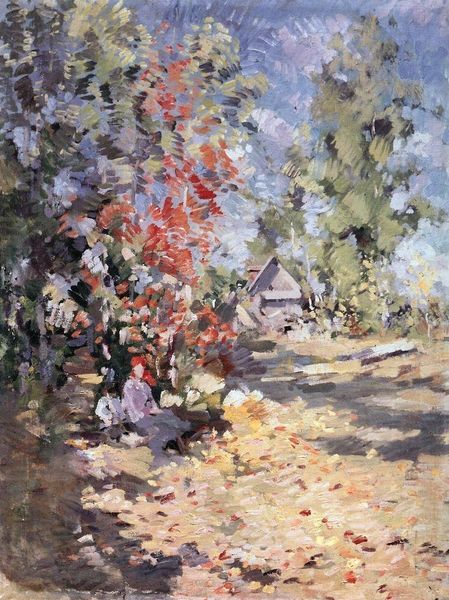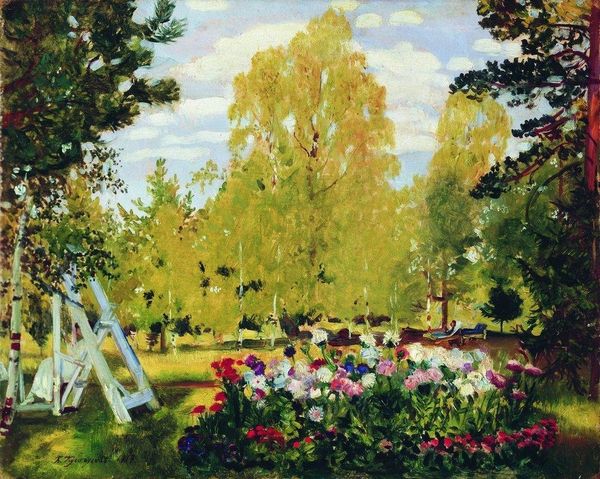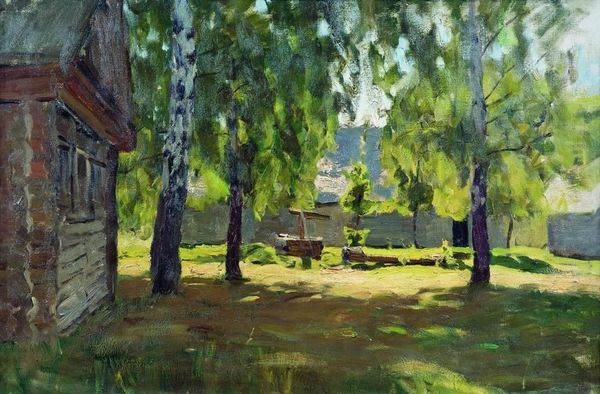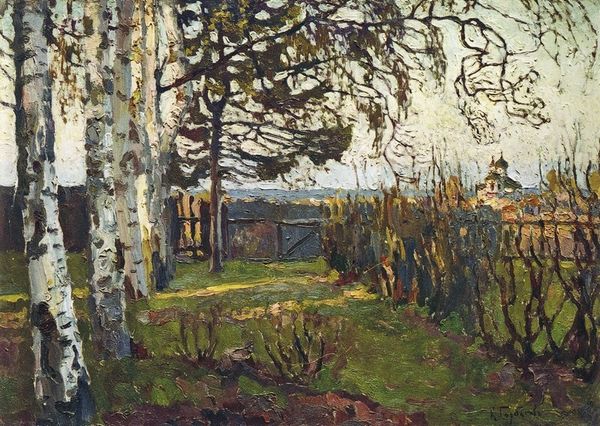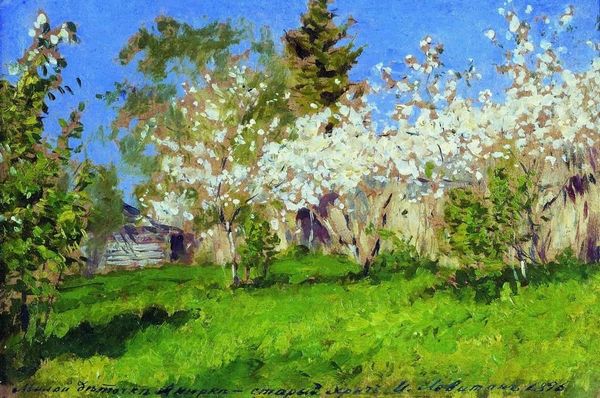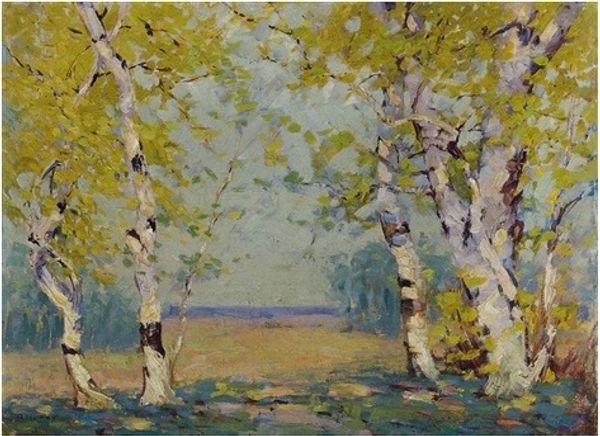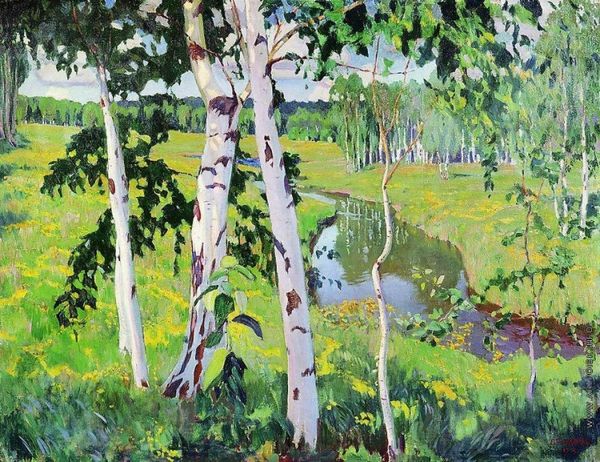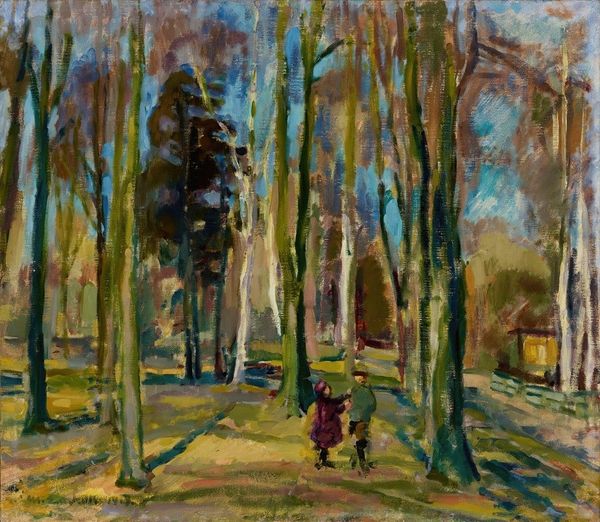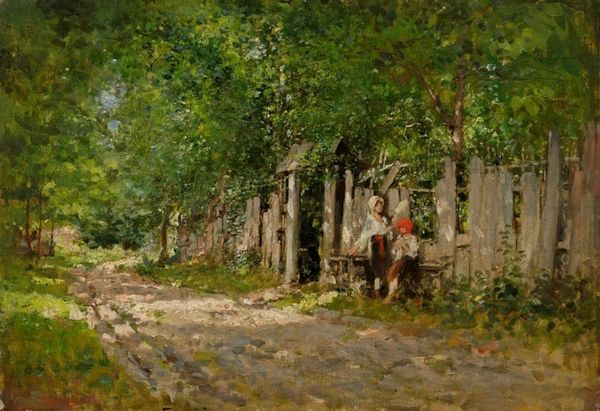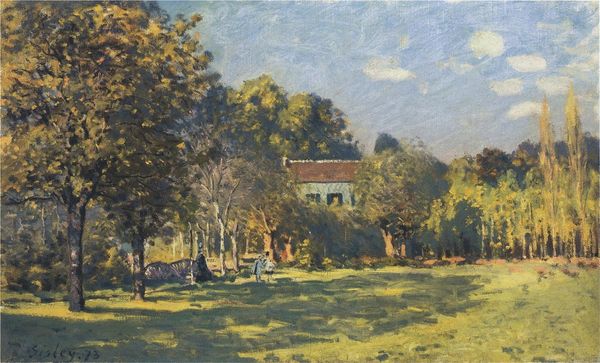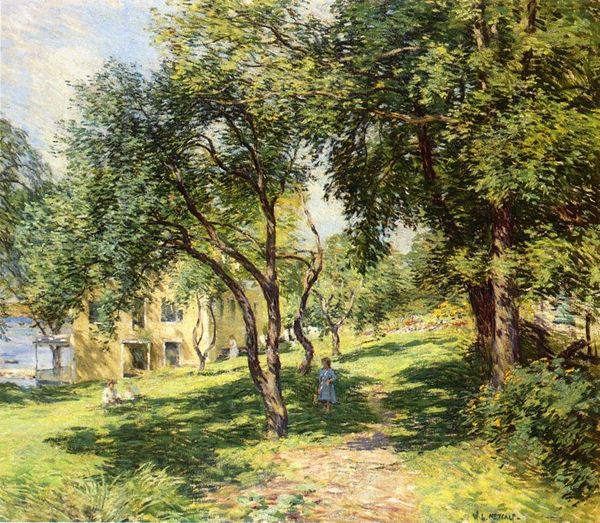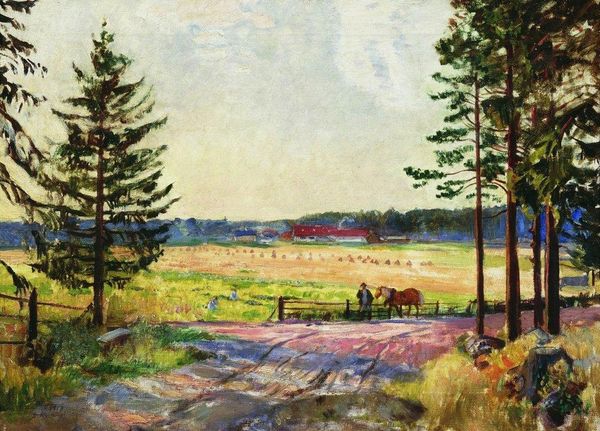
Copyright: Public domain
Curator: This oil painting by Konstantin Alexeevich Korovin, titled "Spring", was created in 1917, inviting us into a landscape bathed in the diffuse light of the season. What’s your initial take? Editor: Well, my eye is immediately drawn to the materiality – you can really see the artist’s hand in the impasto. It’s a painting built up of physical marks. Curator: Absolutely. Look closer. Korovin’s brushstrokes, seemingly spontaneous, hint at an underlying understanding of art-nouveau, offering more than a mere representation. Do you see elements suggesting a longing for times when social class separated many from a privileged life of leisure in an open setting such as is portrayed in this scene? Editor: Yes, the quick, loose strokes, it speaks to a certain efficiency of labor, of capturing a fleeting moment with minimal intervention. It almost denies any long held definition separating the artist from more commonplace labors. It is so matter-of-fact. The brushstrokes feel unpretentious. Curator: True, but I read a subversive undercurrent beneath its light surface. A picnic in springtime seems an innocuous subject, but created during the prelude to the Russian Revolution, does it invite conversation around the privileges such outdoor gathering places presented? Editor: I agree; the canvas serves as a stage on which materials like paint are used and laid bare as simple tools. And consider the production - a "plein-air" work is deeply intertwined with the natural elements in its physical manifestation. How do such contexts serve the artist's revolutionary drive or commitment to societal reform? Curator: In that period, revolutionary ferment stirred questions of privilege and societal imbalances. I see "Spring" not only as an observation but an articulation of the unseen hierarchies shaping everyday life. Even its impressionistic style subtly questions what is deemed important subject matter during those transformative times. Editor: Fascinating how a seemingly idyllic scene holds these complex material and social tensions. The texture and the application, speaking volumes beyond the immediate vista. Curator: Exactly! This art, then, transcends the superficial, sparking inquiry and insight. The act of representation is no mere aesthetic exercise. Editor: It truly exposes the power of considering materiality in conjunction with broader historical currents, as they intertwine, revealing the social fabric of artistic production and the era.
Comments
No comments
Be the first to comment and join the conversation on the ultimate creative platform.
